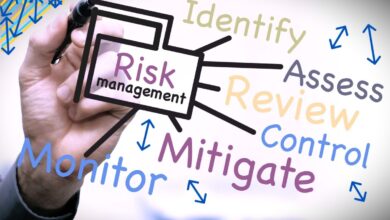Decoding the Difference: Quality Control Services and Quality Assurance Explained

When quality matters for goods and services, two terms like “Quality Control Services” and “Quality Assurance” pop up. Sure, they sound alike, but these processes serve distinct purposes for upholding product integrity. Let’s explore the quality management niche and unravel the key differences between Control Services and Assurance, illuminating how each uniquely contributes to overall quality.
Understanding Quality Assurance – A Preventative Approach
Quality Assurance (QA) is all about being proactive – preventing issues before they arise. QA acts as a vigilant quality guardian, ingeniously weaving strategies and measures to nip potential defects in the bud. This forward-thinking approach prioritizes quality from the outset, ensuring it’s a fundamental building block, not an afterthought, in the production process.
At QA’s core lies meticulous planning of processes and standards – blueprints for excellence. Through rigorous system and procedure design, QA instills a quality-first mindset across all production stages. It’s like setting rules for a game where every player (process, product, person) aims to perform their best and deliver unbeatable quality.
Quality Assurance (QA) focuses on ensuring consistency through improvement. Regular audits are like health check-ups for the company’s QA systems. Audits keep track of the organization’s standards. They identify areas for enhancement. Quality is well-maintained and running smoothly.
Implementing corrective actions for standard deviations shows QA’s commitment. It improves quality. This feedback loop brings the company closer to quality excellence. Every improvement moves the company closer to exceptional quality. QA embeds quality into processes and practices. Excellence becomes the default. Proactive measures ensure product integrity. QA is crucial for sustainable marketplace success.
Diving Into Quality Control Services – The Detective Work
Quality Control Services (QC) carefully inspect products after production. QA prevents problems, while QC uncovers discrepancies. QC meticulously inspects to uphold QA standards. It scrutinizes products to meet high standards for quality.
Consider QC like security guards who double-check everything before letting people enter. It doesn’t politely wait for problems to arise – it actively searches for mistakes and issues, just like detectives investigate crime scenes. Using various methods tailored to examine products closely, QC experts thoroughly inspect items. The tests range from simple visual checks to complex automated processes designed to catch any irregularity that could negatively impact product quality.
But QC isn’t just about finding flaws. Its role includes fixing problems and providing feedback, ensuring detected issues get addressed properly. This could mean sending faulty items back for rework, adjusting manufacturing processes, or sometimes completely discarding defective products. The insights gained from QC activities are invaluable, helping companies continuously improve processes to prevent recurrences.
QC’s meticulous investigative approach doesn’t merely maintain standards – it raises them higher. Each product passing QC’s rigorous testing proves the company’s dedication to excellence. Within quality management systems, QC plays a crucial role, ensuring products reaching consumers aren’t just acceptable but the absolute best, safeguarding brand reputation and consumer trust.
The Strategic Interplay Between QA and QC
Quality Assurance and Quality Control Services work together in a strategic way. QA designs the plan for quality. QC makes sure the plan is followed correctly. QA is like a choreographer planning a dance show. QC is like the lead dancer performing the show. Their partnership ensures the product meets high quality standards and makes customers happy.
QA and QC don’t compete, they cooperate. First, QA creates processes and guidelines. This prevents potential quality issues before production starts. It’s like rehearsing for a show. Next, QC monitors the live performance. Their job is to identify and fix any deviations from the plan. QA sets the theoretical foundation, while QC deals with the practical realities.
QA and QC continuously share feedback with each other. Information from QC’s findings helps QA improve processes. It’s like getting notes after a dress rehearsal. This cycle of improvement ensures quality management evolves. Both teams push the boundaries to make quality management better. Their strategic partnership pursues excellence tirelessly. QA and QC work together in an endless quest for quality perfection.
Productive collaboration between QA and QC teams is essential. Frequent meetings, shared progress reports, and joint problem-solving sessions ensure alignment, maintaining their shared goal – upholding exceptional quality standards. This synergy enhances product integrity, strengthening the organization’s reputation. Customers, stakeholders, and regulatory bodies are impressed by performance.
Implementing Quality Assurance and Control in Your Business
Integrating Quality Assurance and Quality Control Services into your business can significantly improve product quality and market competitiveness. First, establish clear, achievable quality objectives matching your company’s vision and customer expectations. This guides your quality management team’s focus and actions.
Implement a robust quality management system (QMS) – the foundation for QA and QC integration. A well-structured QMS outlines procedures, responsibilities, and processes for consistent quality. It should adapt as new insights and challenges arise from QA/QC activities.
Define precise quality criteria for your products. These benchmarks measure functionality, appearance, and durability against desired standards. Clearly defined criteria streamline QC inspection/testing, ensuring high-quality outputs.
Businesses succeed when they consistently maintain quality standards. They check processes with inspections and audits. These evaluations show how good the quality systems work. Also, they show where to make improvements. Similar ideas apply to products. Using random tests or checking every item ensures problems get found fast. Quality Assurance (QA) and Quality Control (QC) work together in this way.
QA and QC require focused effort from companies. But following quality rules takes adaptability and commitment from everyone. Businesses applying QA/QC carefully exceed customer expectations. They set new benchmarks for quality in their industries. Companies won’t achieve this easily – it takes ongoing work and a culture valuing quality across the board.
Conclusion
QA and QC intertwine to balance product quality harmoniously. QA strategically maps preventive measures ensuring flawless manufacturing. Meanwhile, QC rigorously executes inspections and corrections upholding QA’s high benchmarks. Together, this dynamic partnership safeguards product excellence. Individually, they enhance each other’s effectiveness. If used together, they protect product integrity formidably.
This connection helps make quality the best it can be. It also lets businesses please customers more. Using QA and QC helps products get better from start to finish. Quality is important at all points. In the end, QA and QC help in third party inspection services. This does more than meet what customers and others want. It sets new quality standards for that industry.



